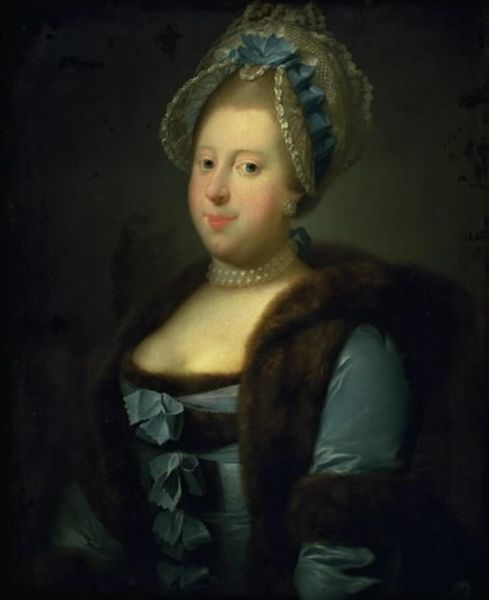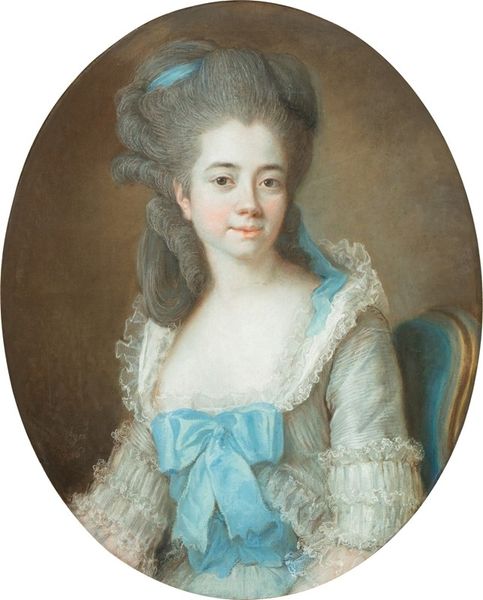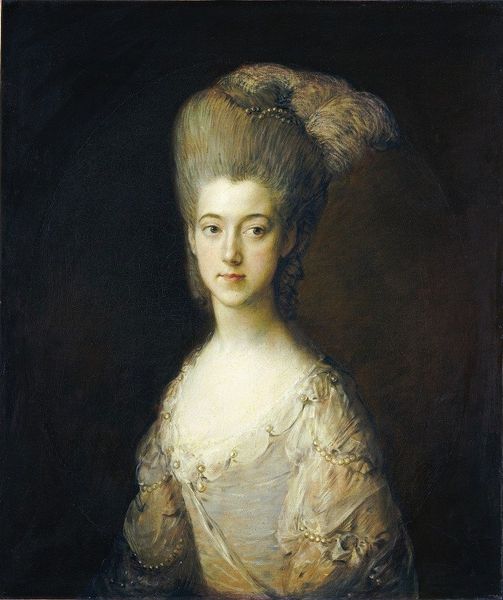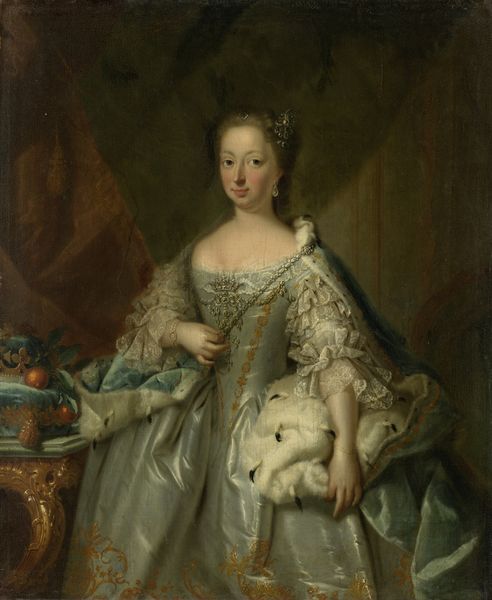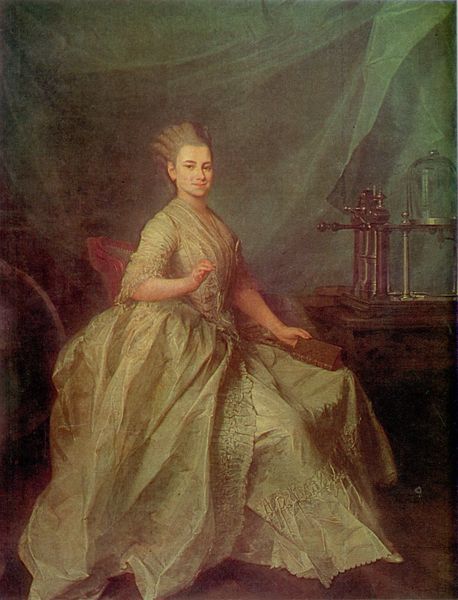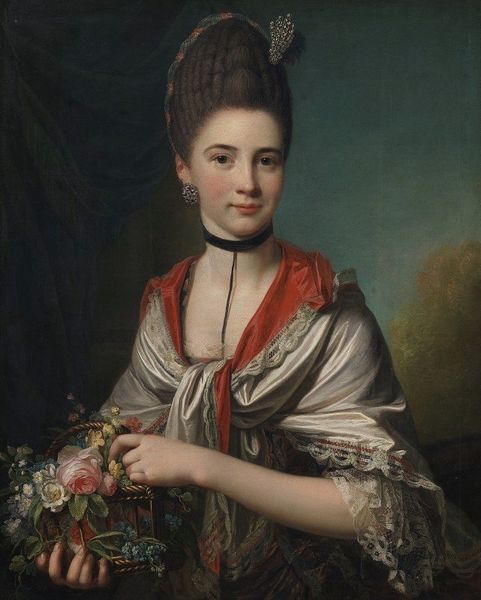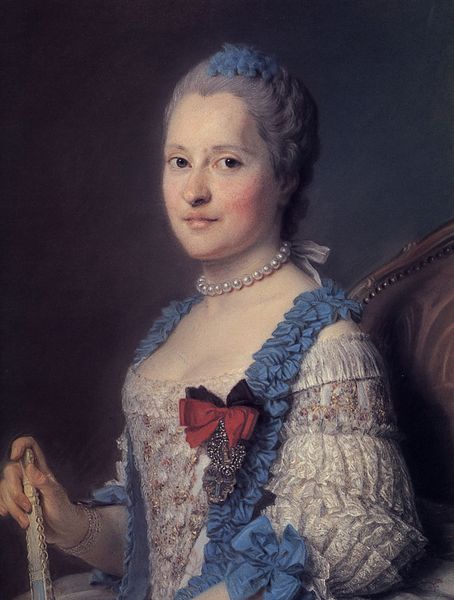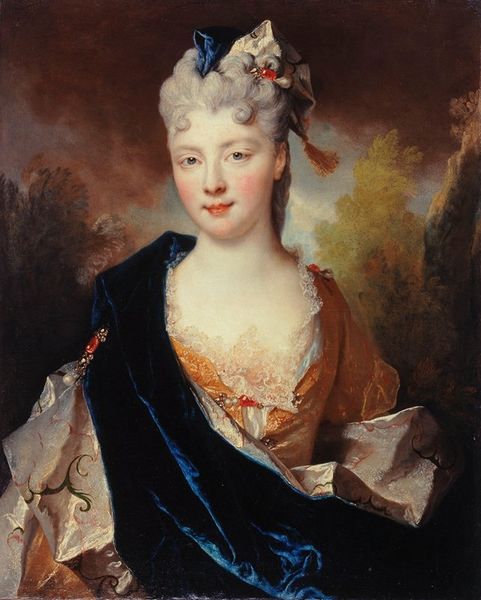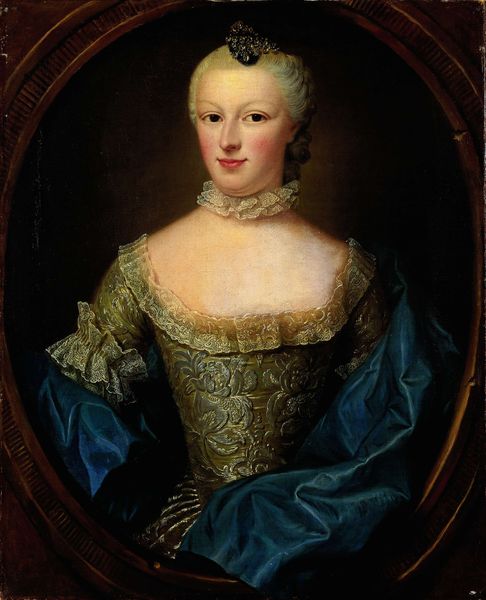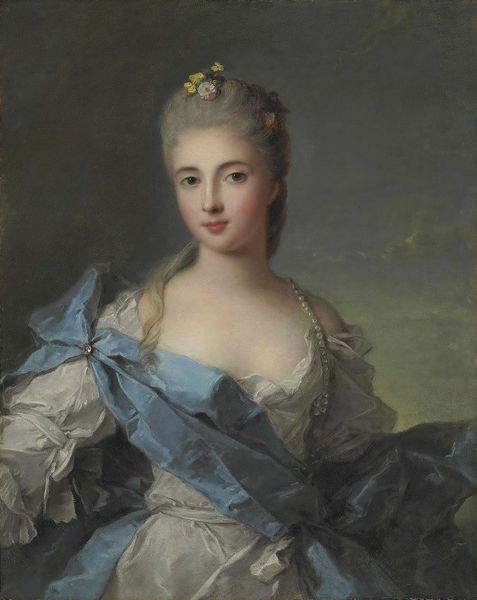
Copyright: Public Domain: Artvee
Editor: So, here we have Jens Juel’s "Portrait of Bodilla Birgitte von Munthe af Morgenstierne," painted in 1772, using oil paints. It's strikes me as simultaneously grand and quite reserved. Her gaze is direct but there’s a somberness about it. What do you read in this portrait? Curator: That somberness, you nailed it! It's the weight of societal expectation, wouldn’t you say? I see a woman both adorned and confined. The fur and lace, while beautiful, feel almost like a gilded cage. Think about the Rococo period; opulence reigned, but beneath it all was often a longing for something more genuine, something less performative. Editor: Absolutely! I see that duality now. The almost severe hairstyle paired with such delicate accessories. Curator: Exactly! It's a contradiction that reflects the era perfectly. It makes me wonder, doesn’t it? Was she comfortable in her role, or merely playing the part expected of her? Also, the artist cleverly uses color, with a darker muted background, a teal colored gown and fur. Why do you think Jens Juel employed these color choices? Editor: Possibly to direct all our focus straight at her face. It's definitely working, if so! I keep being drawn back to her expression. Curator: Indeed! Portraits aren't just about capturing a likeness; they're about telling a story. Perhaps even revealing a secret, wouldn't you agree? Editor: I do! It makes me wonder what Bodilla herself would have thought of it, centuries later. Curator: Art history is never really just about the past. It is always a looking glass of present life. That, perhaps, is why it is so powerful!
Comments
No comments
Be the first to comment and join the conversation on the ultimate creative platform.
